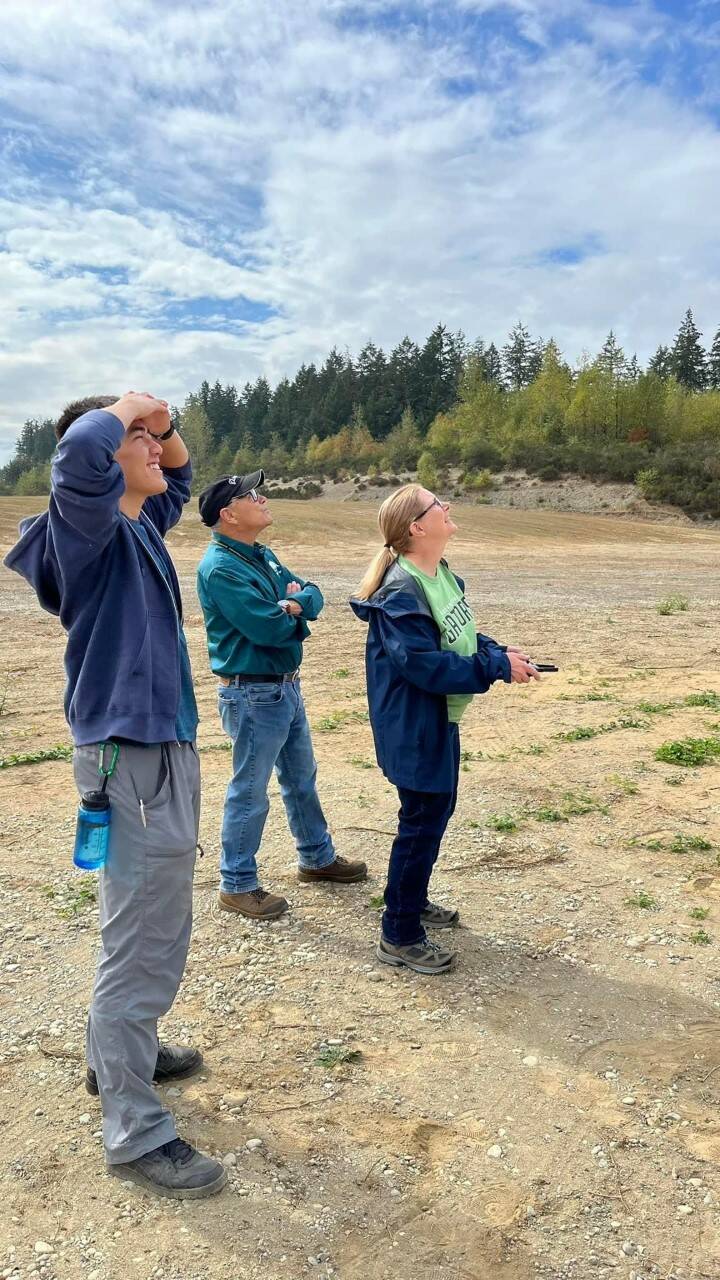For much of the flight from the Renton Airport over South King County and back early Friday afternoon, Jan. 27, things seemed to be going fairly smoothly for the guy at the yoke.
Right turn over SeaTac Airport, north over downtown Seattle, cruising over Husky Stadium at about 55 knots in a cloudless sky.
Looking good.
Then, an unexpected up-down, an unsettling side-to-side, and … what in the heck was that!? Shaken and stirred, the neophyte in the pilot’s seat turned to his instructor.
“Turbulence?”
“Combination of turbulence, and maybe a little rough flying,” instructor Frank Cantwell laughed with a gentle poke at the green-as-grass guy in the pilot’s seat.
In my defense, when one has in no way mastered the interplay between the yoke — pull back, go up, push forward, go down — and the two rudder pedals under one’s feet — they turn the plane right or left in combination with the yoke — any sudden movement can lift the hairs on the back of the neck.
Fortunately, for the cities of Seattle and Bellevue and anything else that would have lain helpless in the single-engine plane’s wobbly path had the flight been for real, nothing and nobody was ever in any danger.
“It’s okay,” Cantwell assured me from the co-pilot’s seat of the RedBird Flight Simulator in Green River College’s Aviation Technology Center in north Auburn. “You’ve never flown before.”
I suppose that should have helped me lighten up.
Still, even in a full-motion flight simulator, in the safety of a building in north Auburn, the idea of slamming into a mere image of the ground on a computer screen, or into a virtual skyscraper, was enough to jangle the nerves, especially with a long-seasoned pilot and top-notch instructor like Cantwell at the elbow.
Who watches every move. Whose eyes miss nothing amiss.
“No, no, don’t steer it …no, no, don’t touch that yet …”
And offers bits of advice gained from long experience as an Air Force and private pilot.
“When you’re flying fast, the ailerons — rudders — are most effective. When you’re flying slow, the rudders are most effective, but it’s always a combination.”
It’s Cantwell’s job, and the job of fellow instructors like George Comollo, who’s been part of the college’s program for 23 years, to take all of the students under their wings and provide them the stuff they need to be pilots, or air traffic controllers, or dispatchers, or drone pilots, and to overcome any initial awkwardness and fumbling so they gather strength and confidence as they move along.
And to do it all with a steady hand.
“We train you to be composed,” said Cantwell, who has been an instructor at the Aviation Center since September 2022, but has flown planes for the U.S. Air Force and has been a private pilot for decades.
Green River designed its aviation technology program to provide students with a real-world education and competitive advantages in the job market.
It’s all done in classrooms and hands-on labs that offer a wealth of technical instruction and training to ensure that the people the school passes on for future employment in the aviation industry have the right stuff inside and know their subjects inside and out.
Green River Aviation is one of 37 institutions throughout the nation the Federal Aviation Administration has selected for the Collegiate Training Initiative (CTI) program. The closest alternatives to GRC’s programs are in Anchorage, Los Angeles, and Grand Forks, North Dakota.
The CTI program establishes an official partnership between the FAA and select aviation education programs. Green River recommends its students to the FAA for hire as air traffic controllers, granting students an advantage in the extremely competitive hiring process.
At GRC, advanced computer software simulates real-life air traffic, exposing students to the air traffic environment in the lab. When under headsets, they deal with moving images on a bank of computer screens and talk with the virtual pilots of the virtual planes those images represent.
Word is, the lab uses the same setup the Federal Aviation Administration employs at its academy at its headquarters in Oklahoma City.
“Not all of the other programs have a lab, which is not required by the FAA to be approved, but the school has supported it over the years,” Comollo said. “It gives students a leg up over those who are not trained in a lab.”
Successful program completion and selection by the FAA can potentially feed directly into air traffic controller training at the FAA Academy in Oklahoma. Students must meet additional requirements beyond acceptance to Green River’s aviation technology program to participate in the CTI program.
Colie Brooks, today a mechanic and wing builder at the Renton Boeing plant, is training to be an air traffic controller. Last Friday, under the guidance of a simulator instructor, Brooks was honing her skills at integrating flaps into the landing process, as traffic controllers need to understand basic pilot and instrument skills so they can communicate with them.
The recent Spokane transplant began her GRC studies in September 2022, and was one of Cantwell’s first students.
“I want a much better understanding of aviation than I have now,” Brooks explained.
Looks like she’s onto something. Job prospects for air traffic controllers are good, especially for women, who are underrepresented in the aviation industry.
“There’ll be about a thousand controllers hired every year for the next several years,” Comollo said.
Advanced technology, exceptional instructors, and specialized Federal Aviation Administration-approved programs prepare students of every experience level with a foundation in aviation weather, air transportation, air traffic control, English and math.
Cantwell also trains drone operators, who are increasingly finding employment in many fields, including construction.


